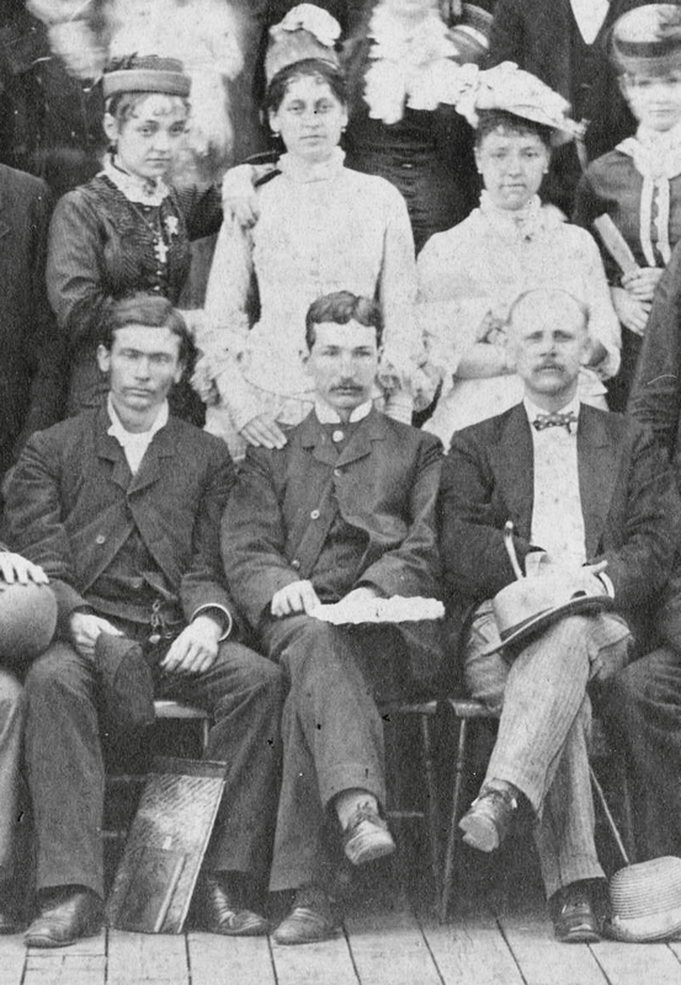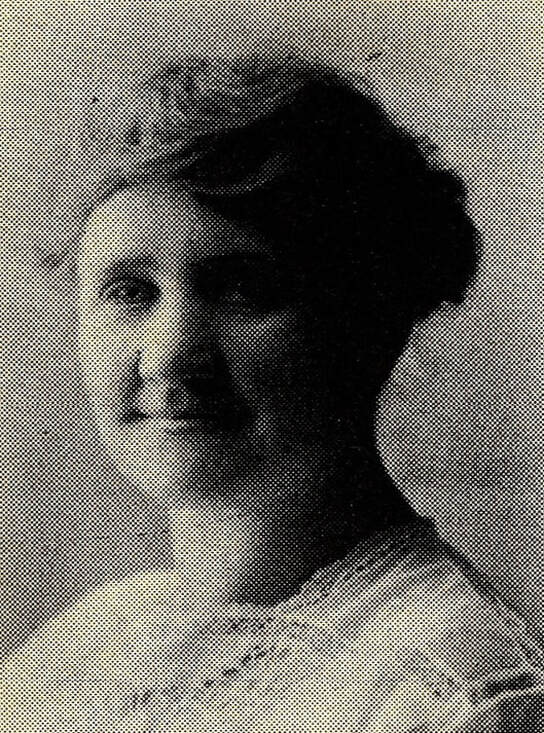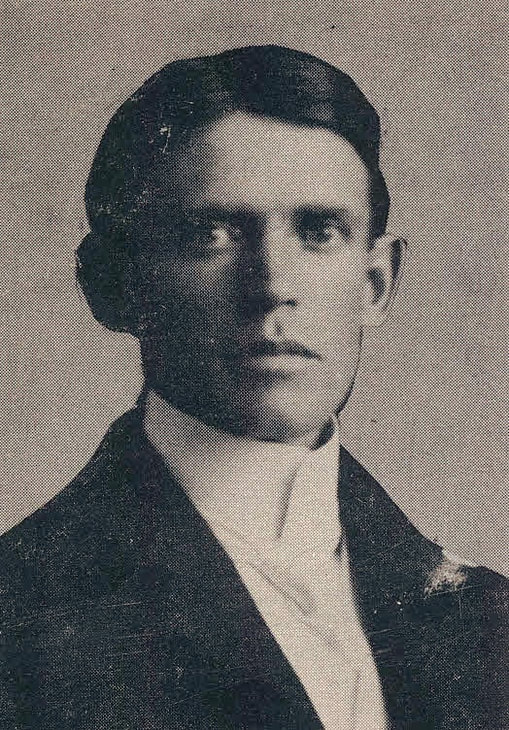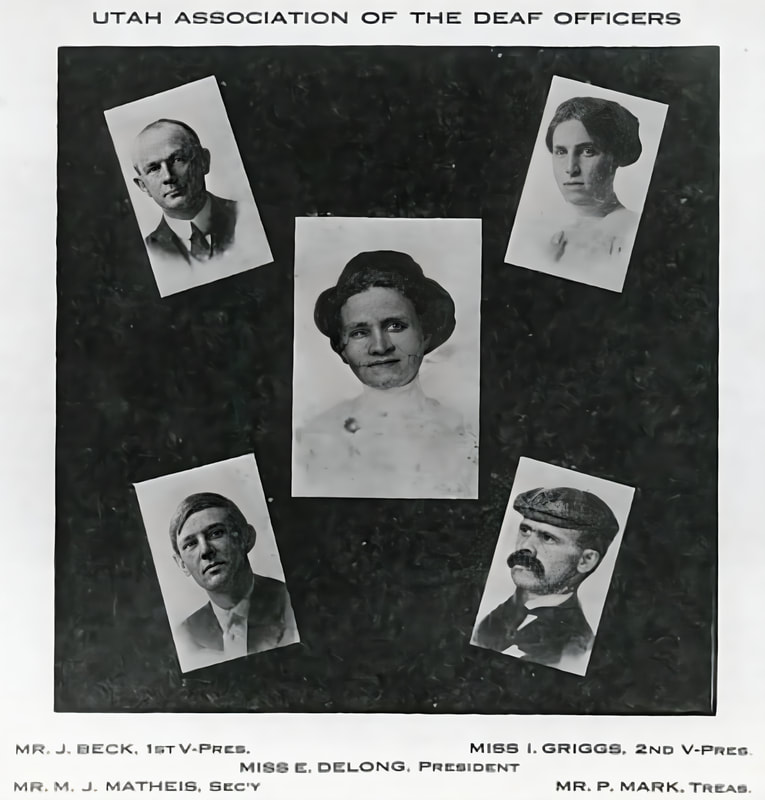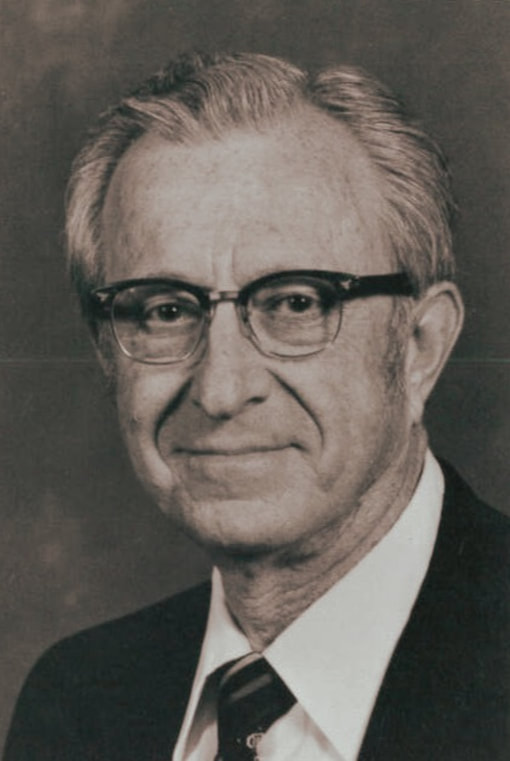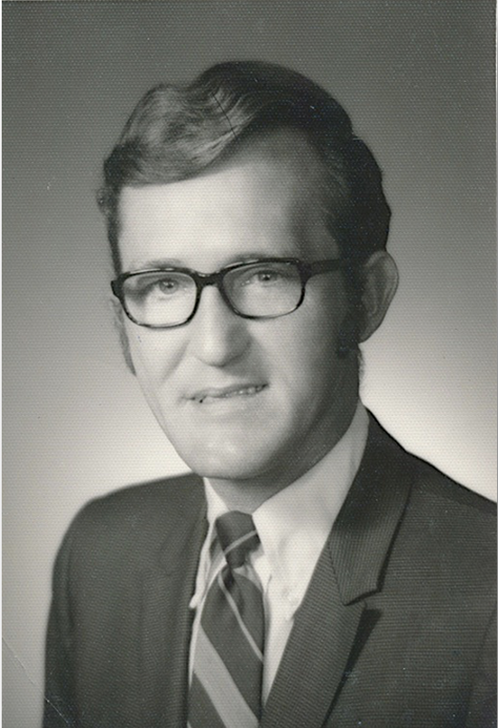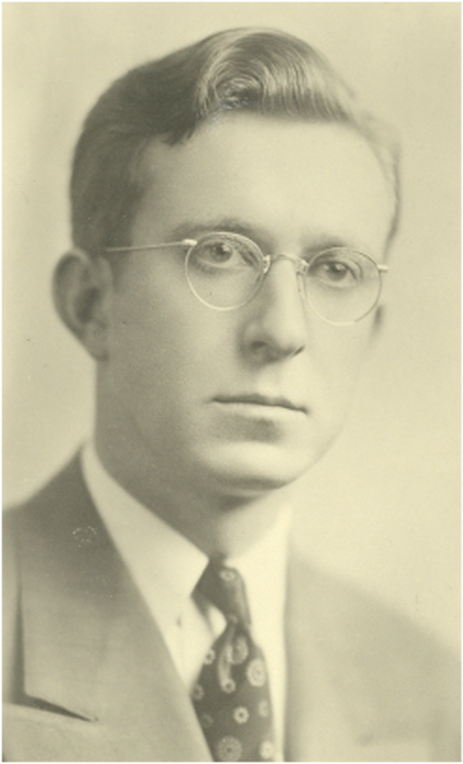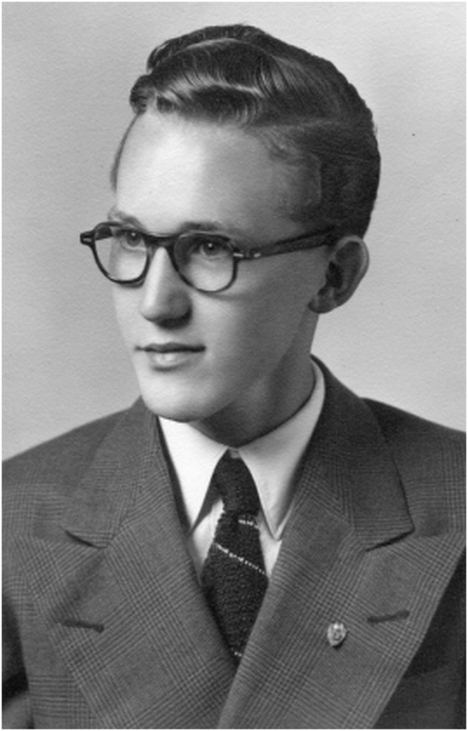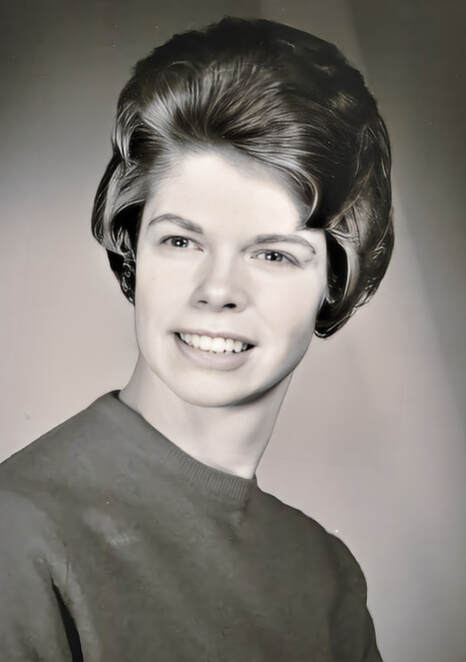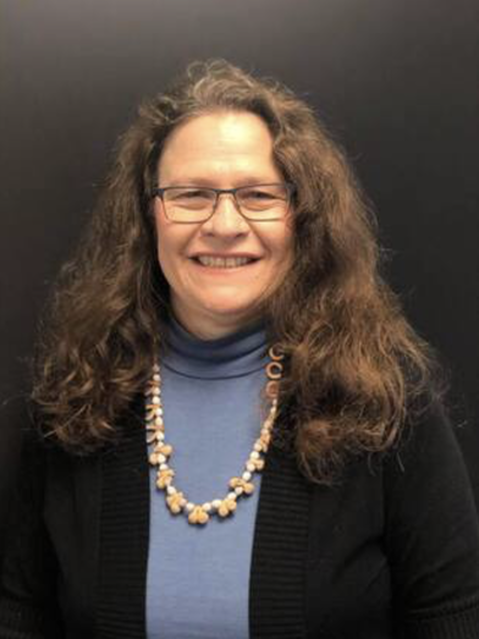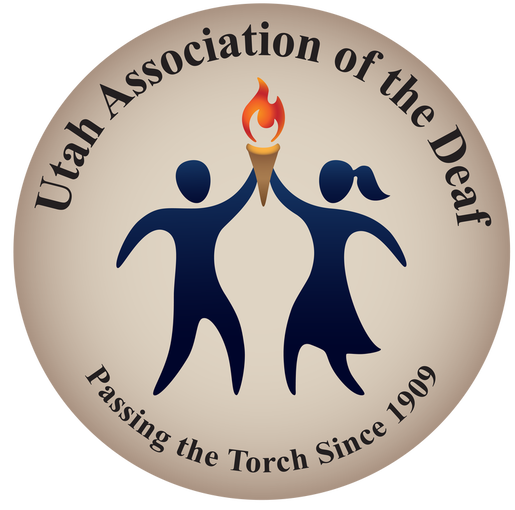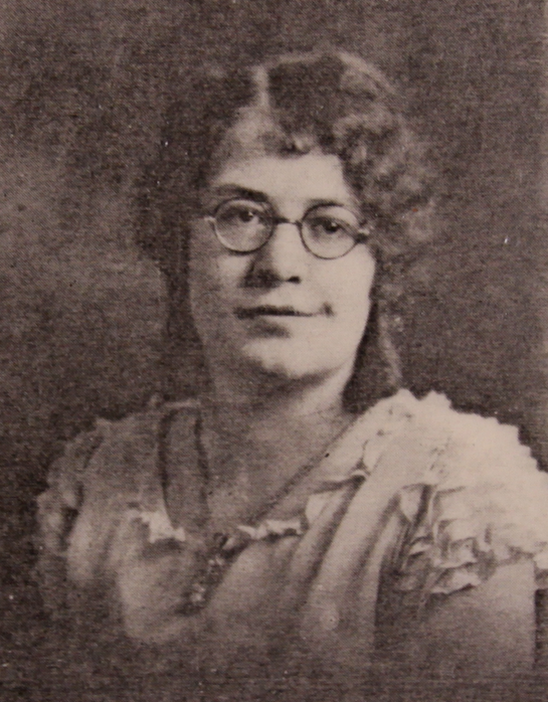A Brief History of the
Utah Association of the Deaf
Compiled & Written by Jodi Becker Kinner
Edited by Valerie G. Kinney & Bronwyn O'Hara
Published in 2014
Updated in 2024
Edited by Valerie G. Kinney & Bronwyn O'Hara
Published in 2014
Updated in 2024
Author's Note
I have thoroughly enjoyed researching the history of the Utah Association of the Deaf (UAD), one of the oldest state organizations in the United States. Since its inception in 1909, the UAD has been a steadfast advocate, preserving and promoting the civil, human, and linguistic rights of the Deaf, Hard of Hearing, DeafBlind, DeafDisabled, and Late Deafened. They have also been powerful advocates for the accessibility rights and protection of the local Deaf community. Its remarkable history and relentless efforts to enhance the quality of life for Deaf individuals in Utah have earned my utmost respect and admiration. Therefore, I take great pride in joining the UAD and honoring those who have guided the organization.
To make a positive impact on the Utah Deaf community, I suggest taking action by becoming a UAD member, participating in the UAD conference every two years to elect new UAD board members, or even joining the UAD board of members. Together, we can support the UAD in its mission to empower the Deaf community in Utah and create a more inclusive society for all.
The Utah Deaf Association has made significant contributions to the local Deaf community. It has helped more Deaf people register to vote, participate in non-deaf political discussions, stay informed about political matters, and support political causes. However, some people may not interact with or support political causes that are important to the Deaf community, resulting in a "double standard." If you want to make a difference at UAD, you can join us. For instance, I was dissatisfied with the use of the word 'for' in the Utah Association for the Deaf. The use of 'for' was perceived as patronizing towards the Deaf community, implying that they were second-class citizens who needed help from society. The change to 'of' was not just a linguistic shift but a significant step towards recognizing the Deaf community as equals, promoting inclusivity, and fostering a more supportive environment. As a result, in 2011, I joined the association with the specific goal of changing the name from 'for' to 'of.' With the support of Philippe Montalette, the association's president, I proposed changing the name from "for" to "of" in 2012 to become the Utah Association of the Deaf. The UAD voting members unanimously approved this proposal. The new name recognizes the Utah Deaf community and promotes equal treatment and full participation in society. After completing my two-year term in 2013, this change brought me immense satisfaction. That being said, we can work together to make a difference and avoid complaining or criticizing the organization.
This history aims to raise awareness of UAD's contributions to the Utah Deaf community and emphasize the importance of supporting deaf-related political concerns. I acknowledge that UAD has shortcomings. However, I encourage the Deaf community in Utah to actively participate and support future causes, as well as to join the Utah Association of the Deaf and the National Association of the Deaf to protect our civil and accessibility rights. UAD is a reliable organization that addresses the needs of the Utah Deaf community and advocates for securing our community's social justice needs. I hope that the "Carry the Torch" symbol and available resources will help us appreciate and reflect on UAD's long history of civil rights protection for the Deaf community in Utah.
When writing about individuals for our history website, I choose to use their first name to acknowledge all individuals who contribute to and advocate for our community's causes. Our patriarchal culture often expects to recognize women's advocacy, contributions, and achievements using their husbands' last names instead of their own. However, in the spirit of inclusivity, equality, and recognizing each individual's unique identity, I have decided to use their first names throughout the website. This decision reaffirms our commitment to these values and highlights the significant role of women's advocacy in our community.
Our organization, previously known as the Utah Association for the Deaf, changed its name to the Utah Association of the Deaf in 2012. The association was known as the Utah Association of the Deaf from 1909 to 1962. The association changed its name to the Utah Association for the Deaf in 1963. Finally, in 2012, the association reverted to its previous name, the Utah Association of the Deaf. When writing the history website, I use both "of" and "for" to reflect the different eras of the association's history.
Last but not least, I want to express my gratitude to the Utah Association of the Deaf for their unwavering advocacy efforts on behalf of the Deaf community in Utah. The history of the Utah Association of the Deaf, filled with enduring challenges, highlights the importance of their services in protecting and upholding the rights and privileges of local Deaf individuals. I truly hope that understanding the history of UAD will inspire future Deaf generations to connect with the association and its invaluable services. Additionally, I am confident that readers will come to respect and value the contributions that the association has made to the Utah Deaf community.
Salutations to the UAD leaders!
Jodi Becker Kinner
To make a positive impact on the Utah Deaf community, I suggest taking action by becoming a UAD member, participating in the UAD conference every two years to elect new UAD board members, or even joining the UAD board of members. Together, we can support the UAD in its mission to empower the Deaf community in Utah and create a more inclusive society for all.
The Utah Deaf Association has made significant contributions to the local Deaf community. It has helped more Deaf people register to vote, participate in non-deaf political discussions, stay informed about political matters, and support political causes. However, some people may not interact with or support political causes that are important to the Deaf community, resulting in a "double standard." If you want to make a difference at UAD, you can join us. For instance, I was dissatisfied with the use of the word 'for' in the Utah Association for the Deaf. The use of 'for' was perceived as patronizing towards the Deaf community, implying that they were second-class citizens who needed help from society. The change to 'of' was not just a linguistic shift but a significant step towards recognizing the Deaf community as equals, promoting inclusivity, and fostering a more supportive environment. As a result, in 2011, I joined the association with the specific goal of changing the name from 'for' to 'of.' With the support of Philippe Montalette, the association's president, I proposed changing the name from "for" to "of" in 2012 to become the Utah Association of the Deaf. The UAD voting members unanimously approved this proposal. The new name recognizes the Utah Deaf community and promotes equal treatment and full participation in society. After completing my two-year term in 2013, this change brought me immense satisfaction. That being said, we can work together to make a difference and avoid complaining or criticizing the organization.
This history aims to raise awareness of UAD's contributions to the Utah Deaf community and emphasize the importance of supporting deaf-related political concerns. I acknowledge that UAD has shortcomings. However, I encourage the Deaf community in Utah to actively participate and support future causes, as well as to join the Utah Association of the Deaf and the National Association of the Deaf to protect our civil and accessibility rights. UAD is a reliable organization that addresses the needs of the Utah Deaf community and advocates for securing our community's social justice needs. I hope that the "Carry the Torch" symbol and available resources will help us appreciate and reflect on UAD's long history of civil rights protection for the Deaf community in Utah.
When writing about individuals for our history website, I choose to use their first name to acknowledge all individuals who contribute to and advocate for our community's causes. Our patriarchal culture often expects to recognize women's advocacy, contributions, and achievements using their husbands' last names instead of their own. However, in the spirit of inclusivity, equality, and recognizing each individual's unique identity, I have decided to use their first names throughout the website. This decision reaffirms our commitment to these values and highlights the significant role of women's advocacy in our community.
Our organization, previously known as the Utah Association for the Deaf, changed its name to the Utah Association of the Deaf in 2012. The association was known as the Utah Association of the Deaf from 1909 to 1962. The association changed its name to the Utah Association for the Deaf in 1963. Finally, in 2012, the association reverted to its previous name, the Utah Association of the Deaf. When writing the history website, I use both "of" and "for" to reflect the different eras of the association's history.
Last but not least, I want to express my gratitude to the Utah Association of the Deaf for their unwavering advocacy efforts on behalf of the Deaf community in Utah. The history of the Utah Association of the Deaf, filled with enduring challenges, highlights the importance of their services in protecting and upholding the rights and privileges of local Deaf individuals. I truly hope that understanding the history of UAD will inspire future Deaf generations to connect with the association and its invaluable services. Additionally, I am confident that readers will come to respect and value the contributions that the association has made to the Utah Deaf community.
Salutations to the UAD leaders!
Jodi Becker Kinner
"To make democracy work,
we must be a notion of participants,
not simply observers. One who does not
vote has no right to complain'”
~Louis L'Amour~
we must be a notion of participants,
not simply observers. One who does not
vote has no right to complain'”
~Louis L'Amour~
The Establishment of the
National Association of the Deaf
National Association of the Deaf
The first school for the deaf, initially named the American Asylum for the Deaf and Dumb, was established in 1817 in Hartford, Connecticut. Later, they renamed it the American School for the Deaf. Additionally, various states have formed state associations of the deaf (Gannon, 1981). The first meeting of the newly established National Association of the Deaf was held on August 25, 1880, in Cincinnati, Ohio. Deaf individuals from across the country gathered in Cincinnati for the First National Convention (Gannon, 1981; Van Cleve & Crouch, 1989). These attendees, who had been graduates of the American Deaf school system for more than 60 years, held diverse roles as teachers, school founders, principals, businesspeople, and leaders. Following the detrimental Milan Conference in Italy from September 6–11, 1880, which promoted oralism and banned sign language, resulting in a 'Dark Age' for deaf education, the National Association of the Deaf opposed the oral movement. They also aimed to enhance the quality of life for Deaf individuals by opposing laws that restricted their rights, discouraging imposters and Deaf peddlers, raising public awareness about hearing loss, advocating for improved vocational training in schools, implementing better educational methods, and addressing employment discrimination (Gannon, 1981).
Henry C. White, a principal and teacher of the Utah School for the Deaf, was one of the conference attendees (Gannon, 1981).
Henry C. White, a principal and teacher of the Utah School for the Deaf, was one of the conference attendees (Gannon, 1981).
A Brief History of the
Utah Association of the Deaf
Utah Association of the Deaf
In 1909, Elizabeth Delong, also known as "Libbie," a faculty member, 1897 graduate of the Utah School for the Deaf, and 1902 Gallaudet College graduate, played a crucial role in proposing the establishment of the Utah Association of the Deaf. The main objective of this organization was to address the social and welfare needs of Utah School for the Deaf alums. The proposal was approved by Superintendent Frank M. Driggs of the Utah School for the Deaf and Blind, a decision that instilled confidence in the future of the association (Evans, 1999). Utah became one of several states with its own chapter association of the National Association of the Deaf after its establishment in 1880. On June 10, 1909, at the Utah School for the Deaf in Ogden, Utah, the first alum reunion established the Utah Association of the Deaf (Evans, 1999).
On June 10, 1909, at the Utah School for the Deaf in Ogden, Utah, the first alum reunion established the Utah Association of the Deaf (Evans, 1999). The next day, on June 11, Libbie ran for the presidential election and won by defeating two male Deaf candidates, Paul Mark (2 votes) and Melville J. Matheis (2 votes), with a lead of 39 votes (The UAD Bulletin, Summer 1963). She made history by becoming the first Deaf female president of the Utah Association of the Deaf and the first Deaf female NAD state chapter association president in the entire nation.
Elizabeth DeLong, the First Female President
of the Utah Association of the Deaf
of the Utah Association of the Deaf
The next day, on June 11, Libbie ran for the presidential election and won by defeating two male Deaf candidates, Paul Mark (2 votes) and Melville J. Matheis (2 votes), with a lead of 39 votes (The UAD Bulletin, Summer 1963). As a results, Libbie made history by defeating two male Deaf candidates, becoming the first female Deaf president of the Utah Association of the Deaf and the first female Deaf president of a state chapter association of the National Association of the Deaf in the United States. Her victory over two Deaf male candidates in the election, despite the societal barriers, was a significant achievement. Women did not have the right to vote until the 19th Amendment was ratified in 1920, and the National Association of the Deaf also did not allow Deaf women members to vote in their elections until 1964. Libbie's remarkable accomplishment was a testament to her perseverance, likely inspired by her involvement in Gallaudet's O.W.L.S. presidential election in 1901, a secret society for women now known as Phi Kappa Zeta. Her active participation in Utah's early suffrage movement also fueled her educational, political, and spiritual aspirations. Libbie served as president of the Utah Association of the Deaf from 1909 to 1915, delivering a speech advocating for women's suffrage at the end of her second term as president. This speech highlighted her commitment to advocating for women's rights and her role as a trailblazer for Deaf women in leadership positions. Her support for women's suffrage, as well as her significant contributions to the Utah Deaf community and the women's rights movement, continue to serve as inspiration today, underscoring the enduring impact of her work.
The Utah Association of the Deaf is one of the oldest state associations in the United States. Since its inception in 1909, the Utah Association of the Deaf has been a leading voice, advocating for Deaf people's accessibility and civil rights in various areas such as auto insurance, traffic safety, telecommunications, interpreters, education, early intervention, employment, rehabilitation, and more. The UAD was the driving force behind establishing the Robert G. Sanderson Community Center of the Deaf and Hard of Hearing, which has become a thriving hub for community activities. Furthermore, the UAD played an important role in supporting the establishment of the Jean Massieu School of the Deaf, a beacon of education that provides educational opportunities for Deaf children. They also advocated for expanding interpreting services and creating the Deaf Education program at Utah State University, which focused on ASL/English bilingualism (then Total Communication). Today, the Utah Association of the Deaf continues its efforts to advocate for, preserve, and safeguard the accessibility and civil rights of the Deaf community in Utah, giving hope for a more accessible and inclusive future.
The Historical Perspective of Changes
with the Utah Association of the Deaf
with the Utah Association of the Deaf
Dr. Robert G. Sanderson, a prominent figure in the Utah Deaf community, graduated from the Utah School for the Deaf in 1936 and was a long-time member of the Utah Association of the Deaf. He observed a close connection between the history of the Utah Association for the Deaf and the Utah School for the Deaf. Both organizations share common values and characteristics. By 1963, most members and presidents of the Utah Association of the Deaf had come from the Utah School for the Deaf. As stated in the Summer 1963 issue of the UAD Bulletin, the association looks to the Utah School for the Deaf for future leaders to guide the destiny of the Utah Association of the Deaf, safeguard the interests of the Utah Deaf community, and ensure that they continue to have an active and fulfilling role in the community (Sanderson, UAD Bulletin, Summer 1963, p. 6).
The Utah Association of the Deaf has held conventions every three years since 1909, with a later change to two years. The Utah Association of the Deaf hosted its first nine conventions, or "reunions," at the Main Building of the Utah School for the Deaf until 1934. From 1936 onward, all conventions took place off-campus in Salt Lake City, Utah. In 1995, the UAD convention returned to the Utah School for the Deaf. Each convention and conference included the election of officers (Sanderson, The UAD Bulletin, Summer 1963, p. 6; UAD Bulletin, October 1999, p. 1 & 3).
The Utah Association of the Deaf hosted its convention in Ogden, Utah, in 1944, 1965, and 1995, and in Provo, Utah, in 1987, 1999, and 2015. World Wars I and II prevented the holding of conventions in 1918 and 1942.
In 1956, the Utah state statutes established the Utah Association of the Deaf and granted it its own legal identity (Sanderson, UAD Bulletin, June 1956, p. 1).
The Utah Association for the Deaf (UAD) has been a steadfast and unified organization that Deaf individuals have relied on to defend and advocate for their rights for many years. Initially, the organization focused on ensuring the civil rights of Deaf individuals, such as the right to drive in Utah and obtain auto insurance (Sanderson, UAD Bulletin, September 1996, pages 1–3). If you would like to delve deeper into the history of UAD, you can find more information on its website.
The Utah Association of the Deaf hosted its convention in Ogden, Utah, in 1944, 1965, and 1995, and in Provo, Utah, in 1987, 1999, and 2015. World Wars I and II prevented the holding of conventions in 1918 and 1942.
In 1956, the Utah state statutes established the Utah Association of the Deaf and granted it its own legal identity (Sanderson, UAD Bulletin, June 1956, p. 1).
The Utah Association for the Deaf (UAD) has been a steadfast and unified organization that Deaf individuals have relied on to defend and advocate for their rights for many years. Initially, the organization focused on ensuring the civil rights of Deaf individuals, such as the right to drive in Utah and obtain auto insurance (Sanderson, UAD Bulletin, September 1996, pages 1–3). If you would like to delve deeper into the history of UAD, you can find more information on its website.
The Utah Association of the Deaf
Serves As a “Watchdog”
Serves As a “Watchdog”
W. David Mortensen, also known as Dave Mortensen or DM, has been the president of the Utah Association of the Deaf for 22 years. In February 1995, he emphasized in the UAD Bulletin the UAD's role as a "watchdog" for the state's Deaf and hard of hearing community. The UAD has been working towards achieving equality in all aspects of a Deaf person's life, providing them the same opportunities to succeed as hearing individuals. Dave further stated that the UAD believes in advocating for the rights of Deaf and hard of hearing individuals and acts as a "watchdog" to ensure that no one's rights are overlooked or disregarded. As quoted, "they act as a 'watchdog' to ensure that no one's rights are pushed aside or trampled into the cold, cold ground" (D. Mortensen, UAD Bulletin, February 1995, p. 1).
Dr. Robert G. Sanderson, who was the president of the Utah Association of the Deaf and the National Association of the Deaf, stated that the Utah Association of the Deaf served as a "watchdog," keeping a close eye on the educational system and consistently pushing for better education for Deaf children. Even though they had limited success in advocating for the most effective communication method for the classroom, Deaf Education Advocates consistently acknowledged the Utah Association of the Deaf's unwavering commitment to improving the education of Deaf children (Sanderson, UAD Bulletin, September 1996, p. 1–3).
The synergy between Robert Sanderson and Dave Mortensen was a key factor in their success. Dave Mortensen took over where Dr. Sanderson had left off and successfully completed projects he had initiated, such as establishing the Robert G. Sanderson Community Center and passing the legislative bills. Their mutual support and reliance on each other were crucial to their achievements. Dave would not have been able to advocate for the community without Robert's initial efforts, and he would not have been able to complete his work without Dave's support.
The synergy between Robert Sanderson and Dave Mortensen was a key factor in their success. Dave Mortensen took over where Dr. Sanderson had left off and successfully completed projects he had initiated, such as establishing the Robert G. Sanderson Community Center and passing the legislative bills. Their mutual support and reliance on each other were crucial to their achievements. Dave would not have been able to advocate for the community without Robert's initial efforts, and he would not have been able to complete his work without Dave's support.
The Utah Association
of the Deaf Is Many Things
of the Deaf Is Many Things
Dr. Robert G. Sanderson, who served as president of the Utah Association of the Deaf from 1960 to 1963, asserted that no individual, including the president, board head, non-members, or anyone else, represents the Utah Association for the Deaf. Rather, the Utah Association of the Deaf comprises Deaf and hard of hearing people from the general membership. These members elect board members every two years at conventions, and the board, in turn, selects officers and implements plans or projects assigned by the convention. Members of the Utah Association of the Deaf come from a variety of backgrounds and often belong to other organizations as well. The Utah Association of the Deaf board is responsible for running the association's business and working on projects and initiatives to support its members and the Utah Deaf community as a whole. After fulfilling their responsibilities, the board can start new programs or ideas (Sanderson, UAD Bulletin, September 1996, p. 1–3).
Dr. Robert G. Sanderson, a Former President
of the Utah Association of the Deaf and
the National Association of the Deaf
of the Utah Association of the Deaf and
the National Association of the Deaf
Dr. Robert G. Sanderson was a renowned figure in his local community and nationwide. From 1960 to 1963, he served as president of the Utah Association of the Deaf, and in 1964, he won the 17th presidency of the National Association of the Deaf. Dr. Sanderson held this position until 1968, when he oversaw the relocation of the NAD headquarters from Berkeley, California, to Washington, D.C., in 1965. Despite his busy schedule, he remained committed to the cause of the Deaf community on both state and national levels, continuing to live and work in Utah. This dedication earned him immense respect from his peers and colleagues (UAD Bulletin, Summer 1964, p. 1).
In the Spring 2012 edition of NADmag, a publication that shares important updates and insights within the Deaf community, Dr. Bobbie Beth Scoggins, who was the president of the National Association of the Deaf at the time, mentioned that Dr. Sanderson, who received the title "President Emeritus" for 44 years from 1968 to 2012, was recognized as one of the most powerful and inspiring advocates during his tenure as NAD president (NADmag, Spring 2012, p. 1).
Dr. Sanderson's becoming deaf later in life has become a blessing in disguise, as it has motivated his influential work in organizations such as the Utah Association of the Deaf, the National Association of the Deaf, the Robert G. Sanderson Community Center, interpreting services, and deaf education. His contributions have greatly benefited the Deaf community, and Utah has acknowledged his exceptional leadership, lifelong dedication, and services. His legacy is honored through the Robert G. Sanderson Community Center for the Deaf and Hard of Hearing, ensuring that his name will always be appreciated and remembered.
Dr. Sanderson's becoming deaf later in life has become a blessing in disguise, as it has motivated his influential work in organizations such as the Utah Association of the Deaf, the National Association of the Deaf, the Robert G. Sanderson Community Center, interpreting services, and deaf education. His contributions have greatly benefited the Deaf community, and Utah has acknowledged his exceptional leadership, lifelong dedication, and services. His legacy is honored through the Robert G. Sanderson Community Center for the Deaf and Hard of Hearing, ensuring that his name will always be appreciated and remembered.
The Civil Rights Act of 1964
and the Voting Rights Act of 1965 Promote Inclusivity in the National Association of the Deaf
and the Voting Rights Act of 1965 Promote Inclusivity in the National Association of the Deaf
In July 1964, as Dr. Robert G. Sanderson was to be elected president of the National Association of the Deaf, the Civil Rights Act of 1964 was passed, marking a momentous occasion when the NAD granted Deaf women the right to vote. This was a significant step in promoting inclusivity and equality within the NAD. After the Voting Rights Act of 1965 was passed, the National Association of the Deaf allowed Black Deaf people to join and vote in the NAD in 1965, further enhancing this commitment (UAD History). Prior to 1965, the National Association of the Deaf did not give female members the right to vote, nor did it give Black individuals any right to membership (2012 Conference Resolutions). These changes were an important milestone in creating a more inclusive community for all Deaf individuals, regardless of ethnicity, gender, or sexual orientation. The new change also marked a historic turning point in the NAD's history, signifying a shift towards inclusivity and equality. It also highlighted the unity and collaboration within the National Association of the Deaf, a testament to the collective effort of its members and their shared vision of a more inclusive future. This shared vision makes us all feel hopeful and optimistic about the future of this community.
W. David Mortensen, the Longest President
of the Utah Association for the Deaf
of the Utah Association for the Deaf
W. David Mortensen, also known as Dave, played a significant role in advancing civil and accessible rights in the Utah Deaf community. He was a key contributor to the Utah Association for the Deaf, while Dr. Sanderson led the Utah Community Center for the Deaf and participated in local and national activities. Dave was actively involved in the Utah Association of the Deaf for a long time and served as the association's president for 22 years, from 1971 to 1985, 1987 to 1991, and 1993 to 1997. He is the longest-serving president in the organization's history, and no one has ever surpassed his tenure. During his presidency, the Utah Association for the Deaf evolved from a simple structure to a well-functioning business office, and he successfully managed multiple programs. Under his leadership, the Utah Association for the Deaf grew from a small home-run organization to a well-functioning business office.
For many years, the Utah Association of the Deaf has been working tirelessly to ensure that Utah's Deaf individuals can achieve equality in all aspects of their lives, enabling them to participate fully in society. Their work has had a significant impact on the Utah Deaf community, and we can all be proud of their achievements.
Valerie G. Kinney, the longest serving
board member of the Utah Association for the Deaf
board member of the Utah Association for the Deaf
Valerie G. Kinney has been a dedicated member of the Utah Association for the Deaf since 1967. Over the past 40 years, she has demonstrated unwavering commitment and loyalty. Valerie has been an essential part of the Utah Association for the Deaf, serving as a meticulous record keeper. Her deep involvement with the Utah Deaf community began during her time at the Utah Association for the Deaf. Valerie has served in various roles within the association, making significant contributions to the Utah Deaf community. She holds the record as the longest-serving board member of the association, with no one surpassing her tenure. Additionally, she has served on various committees and held positions such as vice president, secretary, assistant treasurer, treasurer, UAD Bulletin editor, UAD Announce moderator, UAD Bookstore manager, co-editor of a directory for Deaf Utahns and Utah Telecom Book, showcasing her diverse experience within the Utah Association for the Deaf. Her record for the longest membership in the UAD is a testament to her dedication and continuity. Her steadfast support also has provided stability for the Deaf community in Utah.
Kim Lucas, the Second Female President
of the Utah Association of the Deaf
of the Utah Association of the Deaf
In 2019, Kim Lucas made history by becoming the second woman to serve as president of the Utah Association of the Deaf, breaking a streak of 104 years during which only men held the position. The first female president, Elizabeth Delong, completed her term in 1915, making Kim's presidency a significant milestone for the organization. Her journey to the presidency was a testament to the progressiveness and inclusivity of the Utah Association of the Deaf, which supported her every step of the way and paved the way for greater diversity in leadership. Notably, Kim is also the first queer president to lead the Utah Association of the Deaf, marking a historic moment in multiple ways and inspiring hope for the future of women's leadership and representation in the Deaf Queer community.
"Passing the Torch"
The logo "Passing the Torch" aligns with my vision after I completed the history of the Utah Association of the Deaf in 2014. The logo symbolizes the equal participation of men and women in political affairs, advocating, safeguarding, and ensuring the civil, human, linguistic, and accessibility rights of the Utah Deaf community.
Since UAD was established in 1909, previous leaders have passed the torch to their successors. The organization persistently fulfills, respects, and accommodates the accessibility and equality needs of the local community.
Despite having resources now, few people in the Utah Deaf community, especially the younger generation, appreciate how much UAD has done for them and take it for granted. I hope the "Passing the Torch" logo will help us remember, respect, and reflect on UAD's long legacy of civil rights protections.
Although UAD has its own logo, "Passing the Torch" is my personal logo, representing UAD's advocacy for the Utah Deaf community.
Thank you for all the Utah Association of the Deaf did for our community!
Jodi Becker Kinner
Since UAD was established in 1909, previous leaders have passed the torch to their successors. The organization persistently fulfills, respects, and accommodates the accessibility and equality needs of the local community.
Despite having resources now, few people in the Utah Deaf community, especially the younger generation, appreciate how much UAD has done for them and take it for granted. I hope the "Passing the Torch" logo will help us remember, respect, and reflect on UAD's long legacy of civil rights protections.
Although UAD has its own logo, "Passing the Torch" is my personal logo, representing UAD's advocacy for the Utah Deaf community.
Thank you for all the Utah Association of the Deaf did for our community!
Jodi Becker Kinner
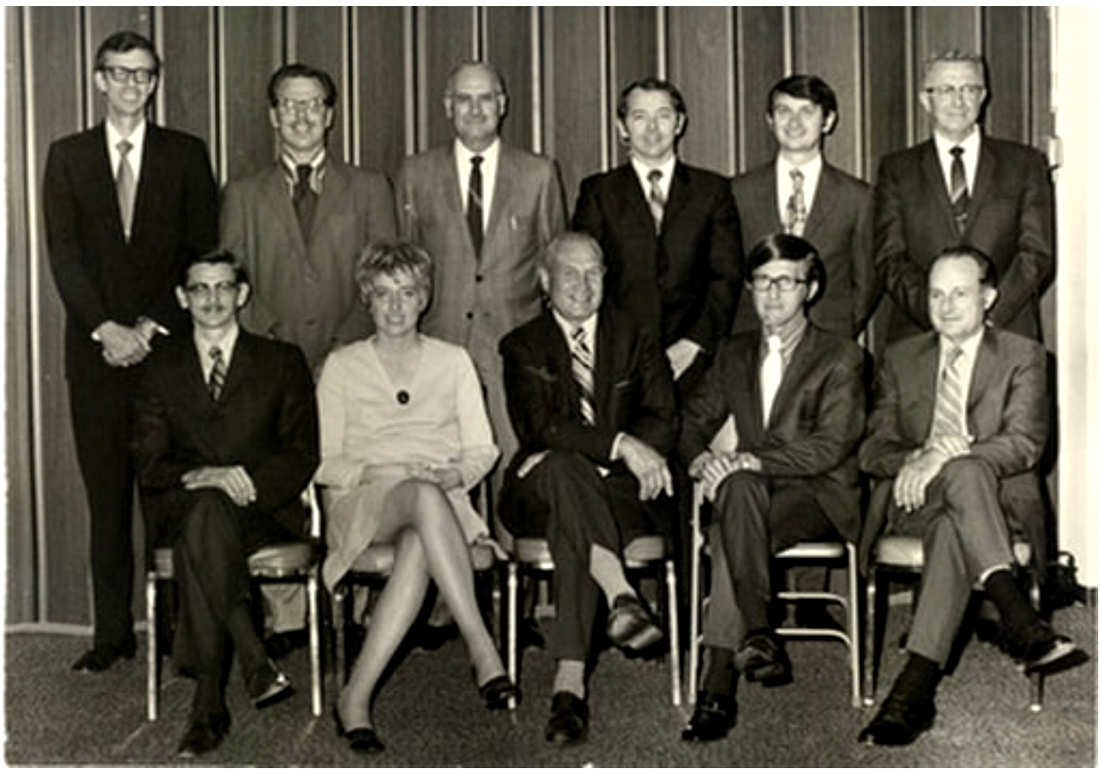
Officers of the Utah Association for the Deaf, 1971. Front row L-R:: Jerry Taylor, treasurer, Beth Ann Campbell, secretary, Lloyd Perkins, vice president, David Mortensen, president, Ned Wheeler, chairman. Back row L-R: Robert Welsh, Leon Curtis, Kenneth Burdett, Dennis Platt, Gene Stewart, Robert Sanderson
For your enjoyment, I have included below scanned photos and materials from the Utah Association of the Deaf events. Enjoy!
A Slideshow of the Utah
Association of the Deaf Conventions
Association of the Deaf Conventions
ARCHIVES
- The UAD Bulletin, Vol. 2, No. 10. Summer 1963. This bulletin issue contains a wealth of information about the Utah Deaf History.
- 29th Biennial Convention of the National Association of the Deaf. Las Vegas, Nevada. June 17-22, 1968. The 1968 NAD Convention was sponsored by the Utah Association for the Deaf.
- Utah Association of the Deaf Scrapbook (Internet)
A Scrapbook of the Utah Association of the Deaf Conventions: 1931-1973
Collected & Created by Gerogia Henricks Walker
Photographed by Duane L. Kinner
Photographed by Duane L. Kinner
Thank you to Gerogia Henricks Walker, a 1930 graduate of the Utah School for the Deaf, for collecting, preserving, and compiling the scrapbook of the Utah Association of the Deaf from 1931 through 1973.
References
Will add references later
Will add references later
